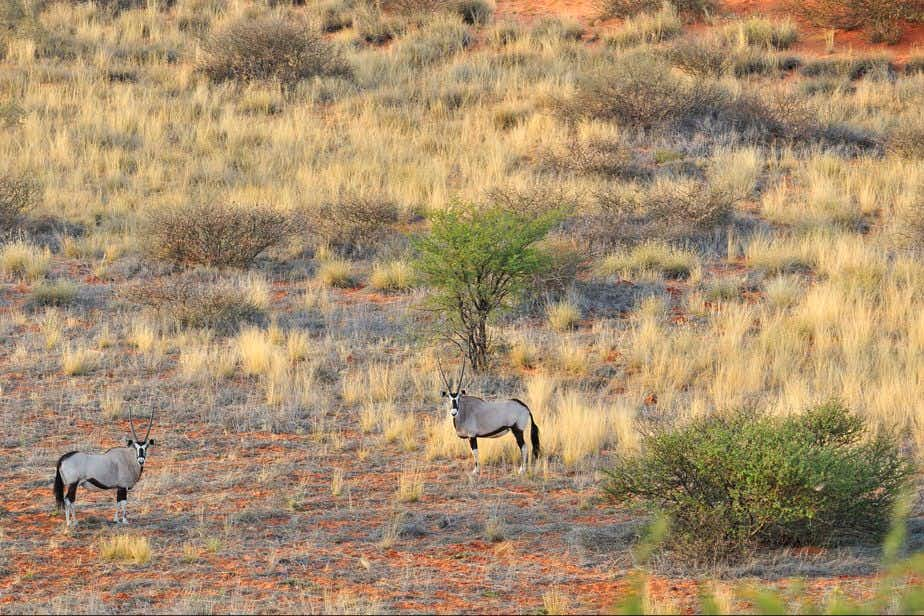Login
No account yet?
Create Account
Kalahari Desert
One of the largest sand plains in the world, with a remarkable number of animals
2 travellers have this on their Bucket List
0 been here
The Kalahari Desert in Africa is a rugged area, where animals and plants have evolved to survive in this extreme climate. The enormous semi-arid savannah of around 900,000 km² is also home to the San people (or Bushmen) of whom there aren’t many left in the world.
The Kalahari is one of the largest sand plains in the world, and not actually a desert by official terms. It’s home to the San people (also known as Bushmen). These hunters and collectors are believed to be one of the oldest ancestral humans in the world, and scientists think the Kalahari is one of the oldest places in the world.
It’s an enormous semi-arid savannah that is remarkably green in the wet season, and flora and fauna have evolved to adapt to this environment. Its historical origins are actually quite simple, and based on one of the oldest surfaces of the earth – around 3,5 billion years old.
See The Kalahari Big Five
This area has its own Big Five List (a top five of local wildlife), which differs from the ‘regular’ Big Five safari wildlife list: Gemsbok (Oryx), Kalahari desert lion, springbok, eland and leopard. This impressive list is a priority for many travellers, and local guides are incredibly successful at finding these animals.
Best period to visit
If you want to see animals the best time is in winter, from June to August. It’s not too hot during the day and quite cold during the night.
If you want to see flowers you should visit between December and May, but prepare for heavy (short) rain storms and thunder storms. It’s a great time to see how rugged it can be here, and you’ll see how the flora and fauna manage these extreme weather conditions. It’s less busy with tourists during this time.
Go on your own
The Kalahari is mostly absolute wilderness, so you have to be very well-prepared if you choose to travel around by yourself, equip yourself with detailed maps, a large amount of fluids, and make sure you tell people what your plans are, so that if you don’t show up somewhere, people will ring the alarm.
History of the Kalahari
Several volcanic eruptions created new lava around 65 million years ago and wind and rain brought masses of sand from the coasts to this area of Africa. The red sand dunes that change shape on a daily basis are the Kalahari’s drawcard, but there are also forests and bushlands. There is an extreme climate in this area, with temperatures ranging from thirty degrees Celsius during the day to up to minus fifteen degrees Celsius at night.
The word Kalahari is derived from the language of the Tswana people, a relatively unknown people who are native to southern Africa, and it roughly translates to ‘the great thirst’. This semi-desert is mainly located in Botswana, but also covers areas of Namibia, Zimbabwe, South Africa and Angola.
The migration of the Kalahari Desert
Its wildlife has evolved to survive here, and long ago it was home to one of the largest herds of animals in the world, early western settlers have described endless plains of springboks, a herd around 200 kilometres long and 20 kilometres wide.
It is believed one of the largest slaughters ever took place when this herd was discovered. Despite this, the animal is still quite common here these days, and many other animals roam the plains looking for food, mostly wildebeests and zebras.
In the dry season, they spend most of their time in the northern parts, and in June they make their way towards the Okavango river, and the Boteti River near Makgadikgadi. They are closely followed by predators such as lions, leopards, cheetahs and spotted and brown hyenas. When the first rain falls in January they disperse again.
Be aware
Some parts may have malaria present, but some don’t, years of wet conditions are more likely to produce malaria than dryer times. Make sure you’ve got the right information before you travel here. It can be very cold during the night, and very hot during the day, so make sure you go prepared and drink lots of water.
2 travellers have this on their Bucket List
0 been here


